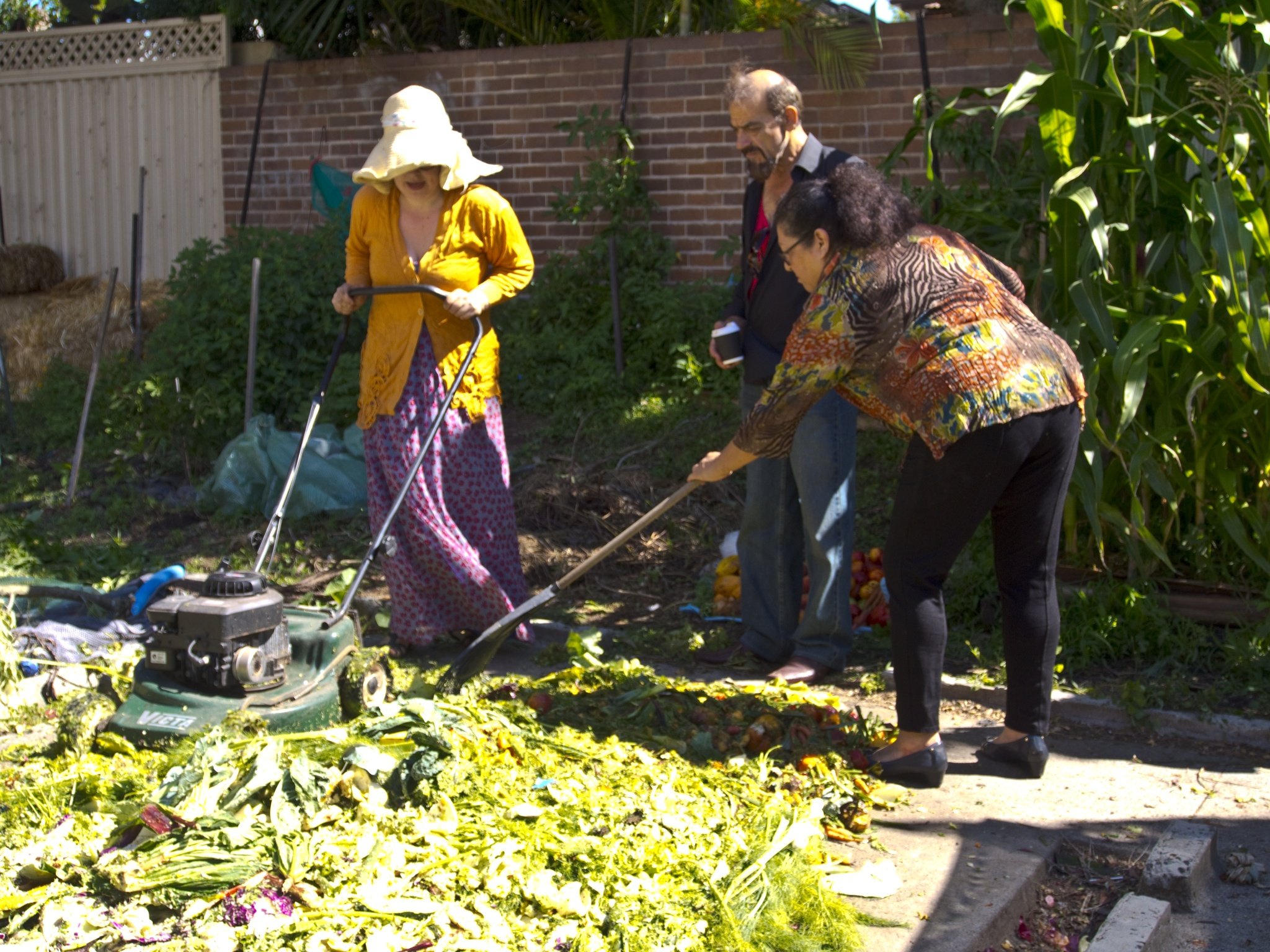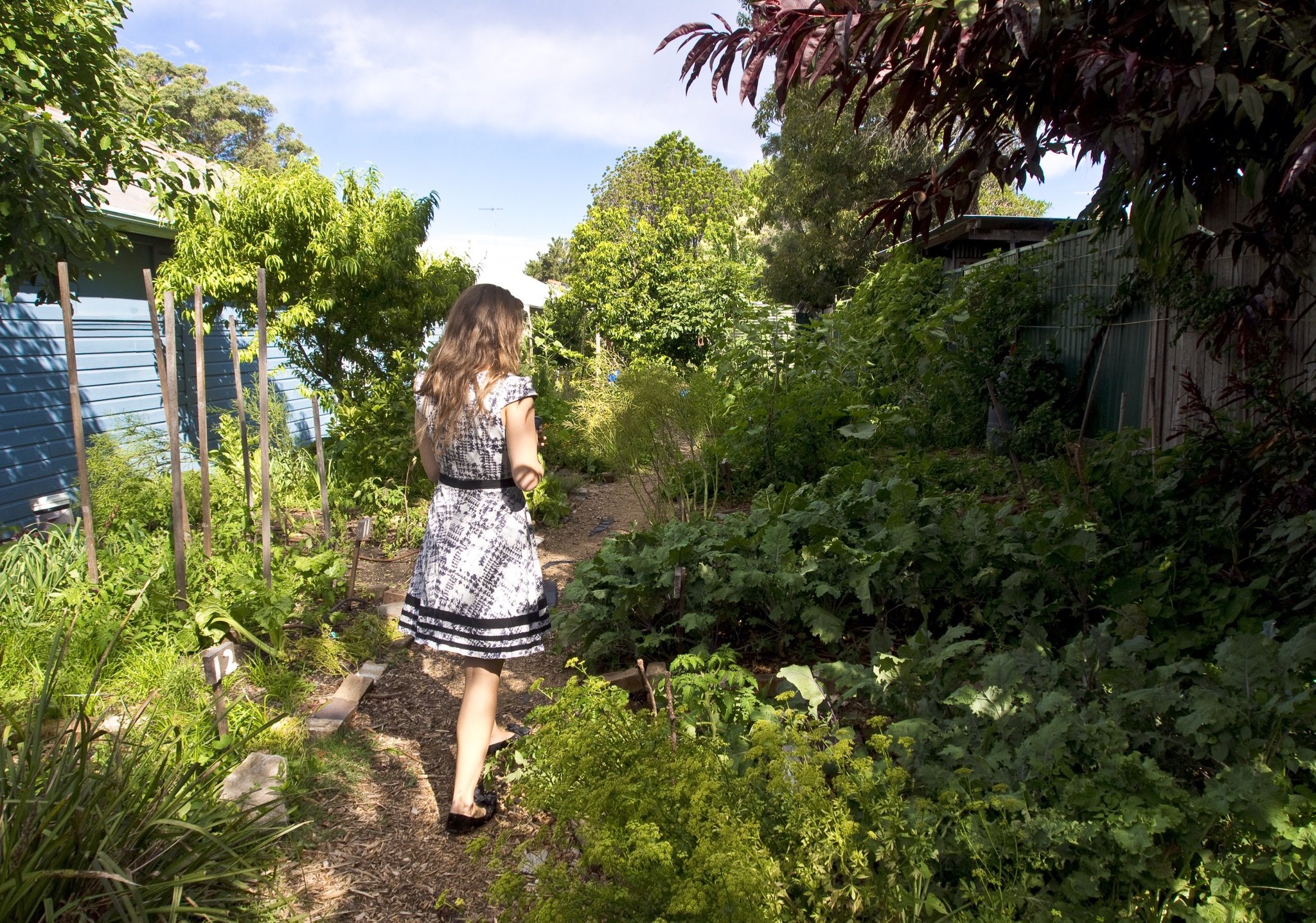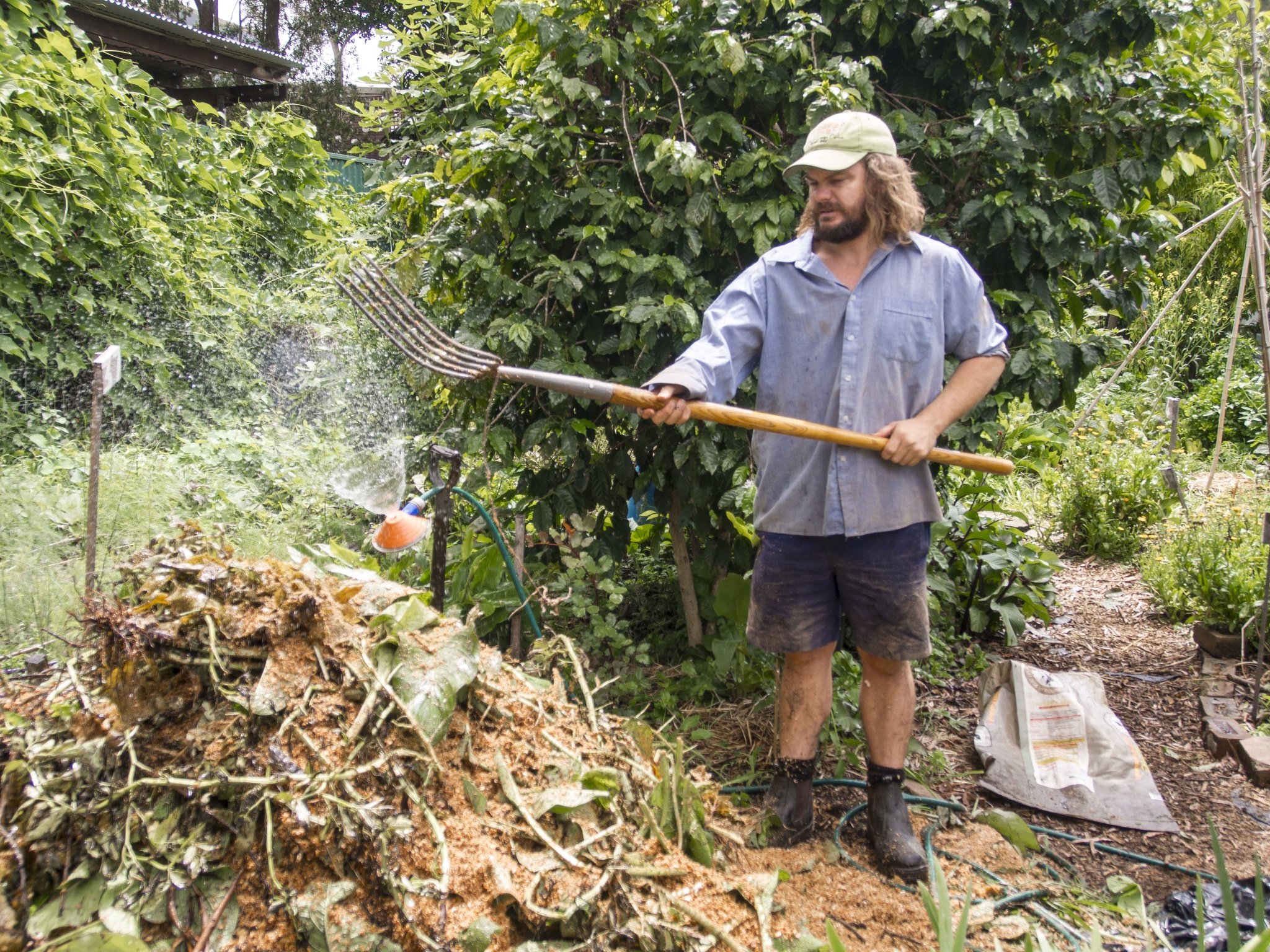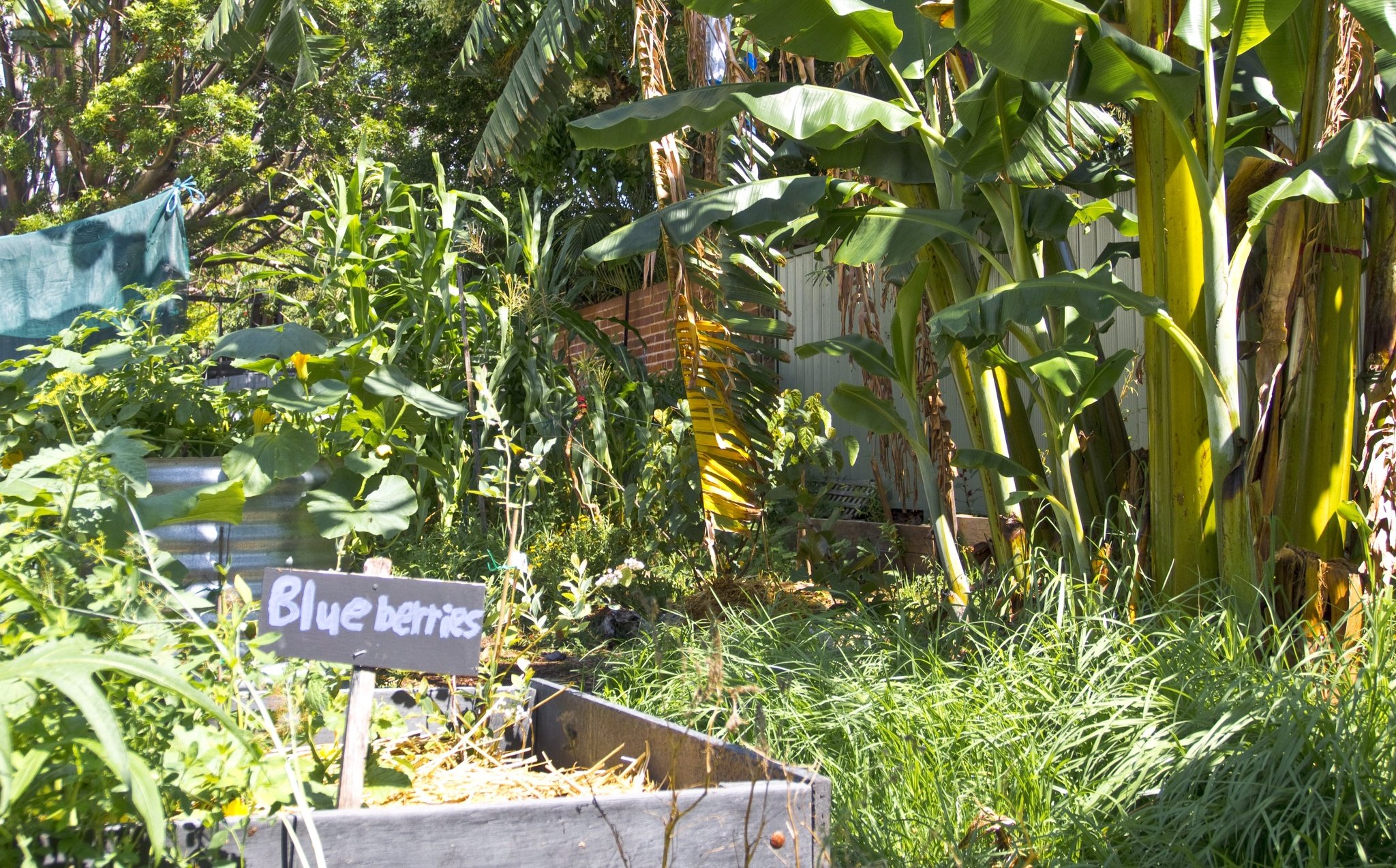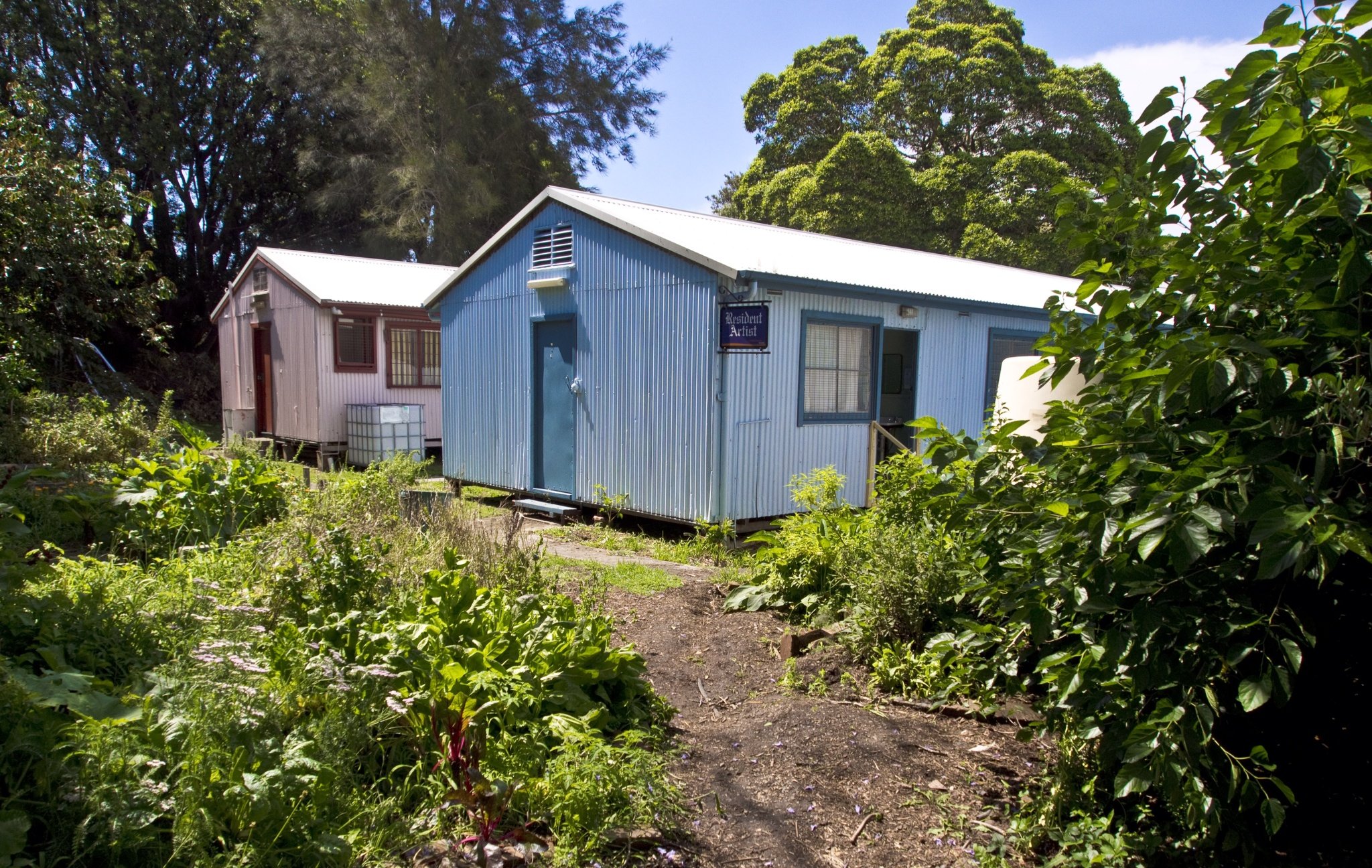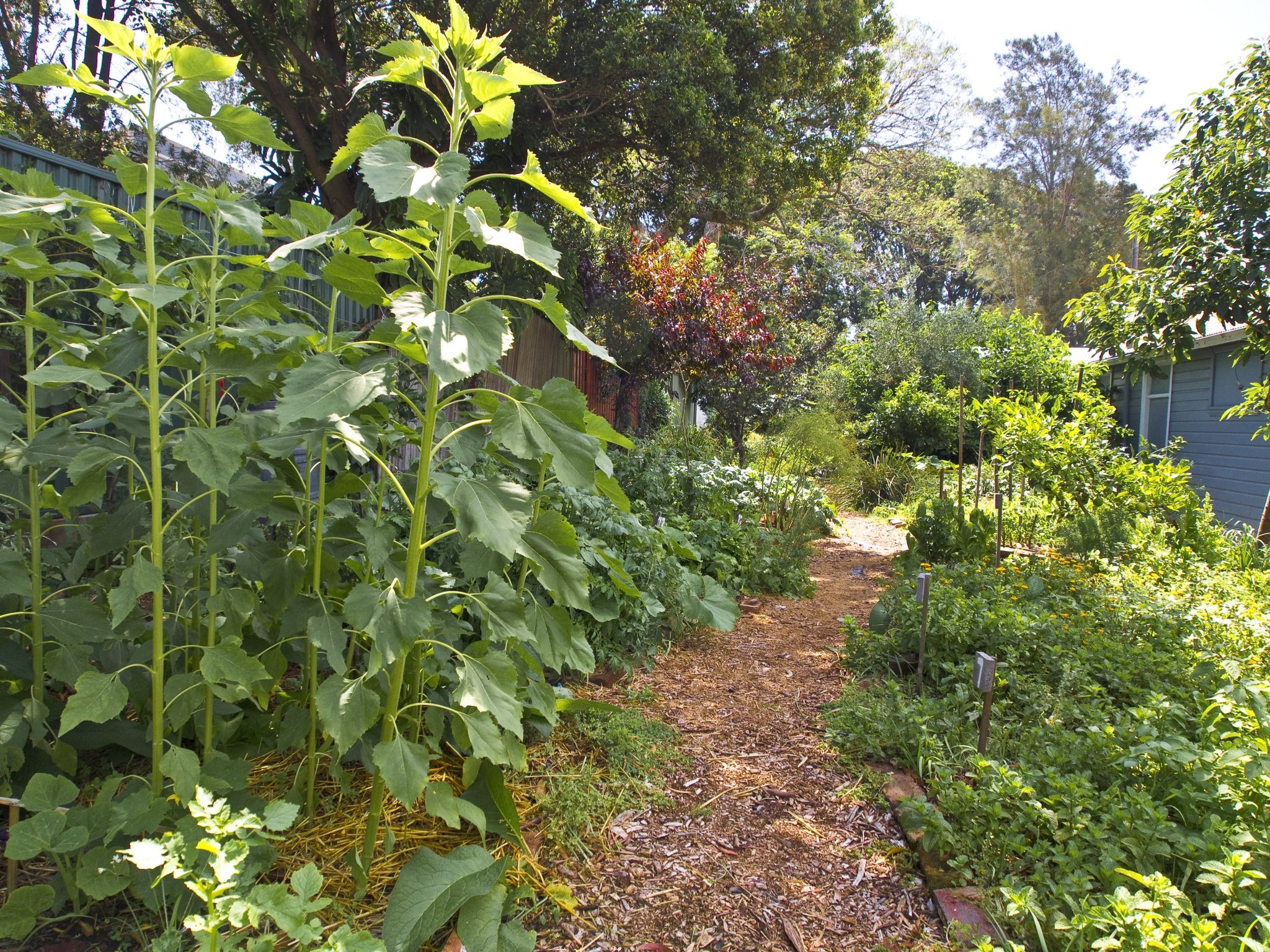

Russ Grayson
A food forest garden in the city
Addison Road Community Garden — a collaborative, do-it-yourself food initiative

Addison Road Community Garden — one of a growing number of community food initiatives around the country — a citizen's agriculture, all part of a local, fair food system.
MORE on community food gardens: communitygarden.org.au
PHOTOS and story: Russ Grayson — pacific-edge.info
MORE on community food gardens: communitygarden.org.au
PHOTOS and story: Russ Grayson — pacific-edge.info
In the foreground we see the broad, triangular leaf of the root crop, sweet potato, while, in the background, a clump of banana grows along the fence.
Addison Road's forest garden —
an open access community food initiative building an urban fair food system
an open access community food initiative building an urban fair food system
Among the fruit trees, down among the vegetables...
TO WALK through Addison Road Community Garden is to stroll along a narrow path past fruit trees, flowering herbs and beds of tasty vegetables.
The garden occupies a long, narrow strip of land at Addison Road Community Centre at Marrickville, in Sydney's Inner West. Over the years the garden has fluctuated in membership and new crews of gardeners have come and gone. Now, it has achieved a stability that allows it to flourish.
The garden occupies a long, narrow strip of land at Addison Road Community Centre at Marrickville, in Sydney's Inner West. Over the years the garden has fluctuated in membership and new crews of gardeners have come and gone. Now, it has achieved a stability that allows it to flourish.
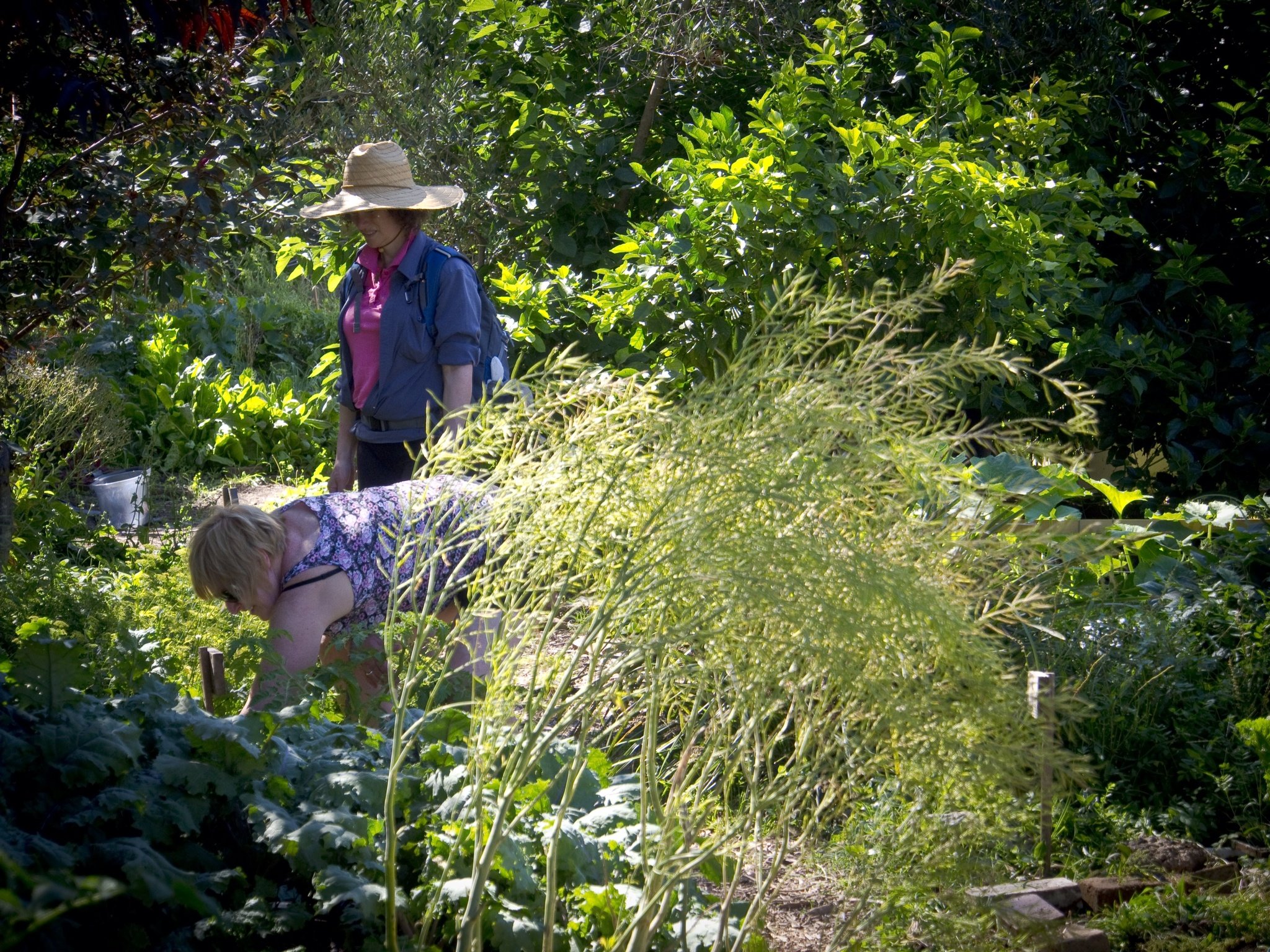
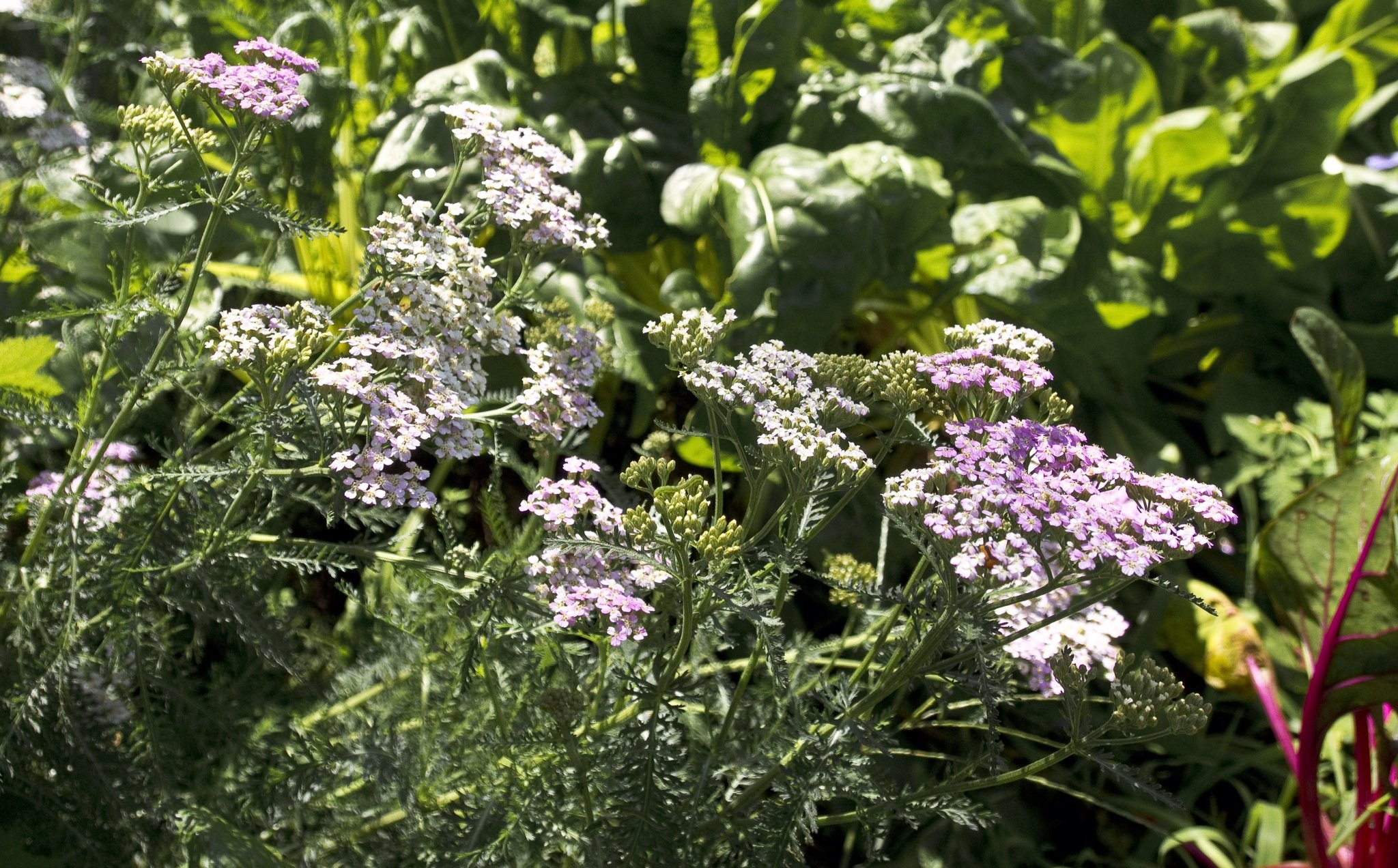
Spring's warm, late afternoon sunlight shafts through the trees onto a community gardener who shelters from it below her big straw hat.
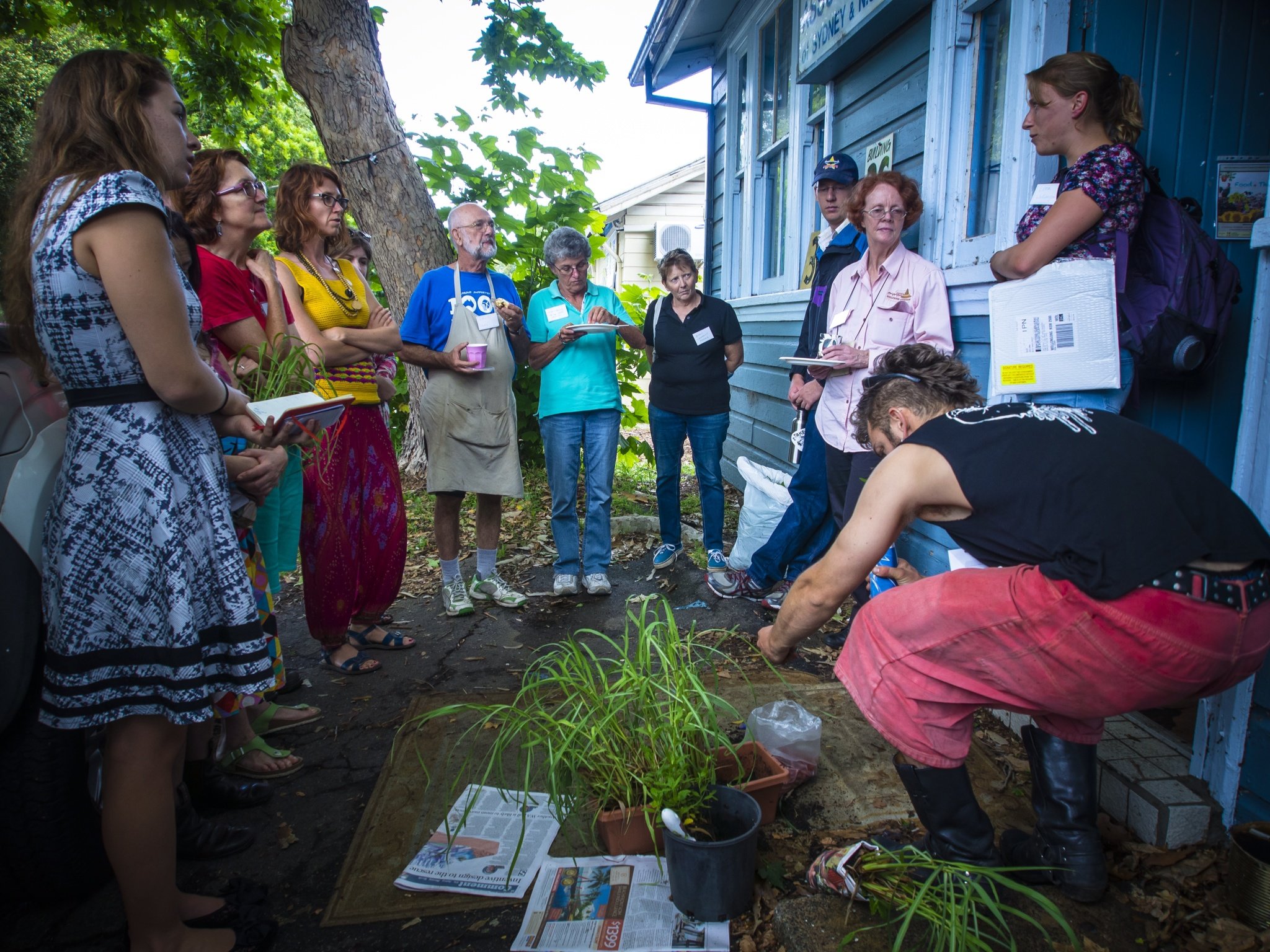
Conserving our agricultural biodiversity...
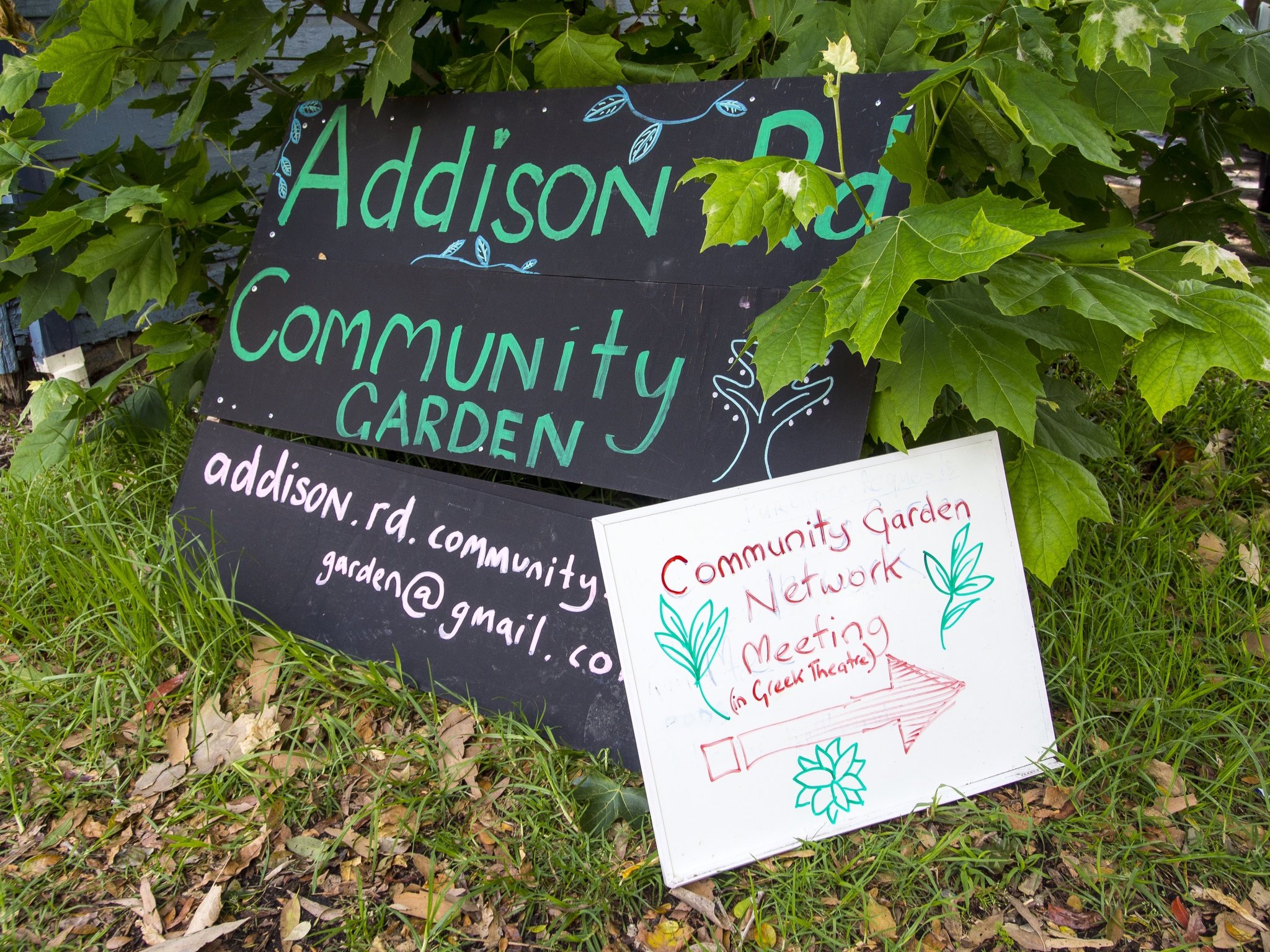
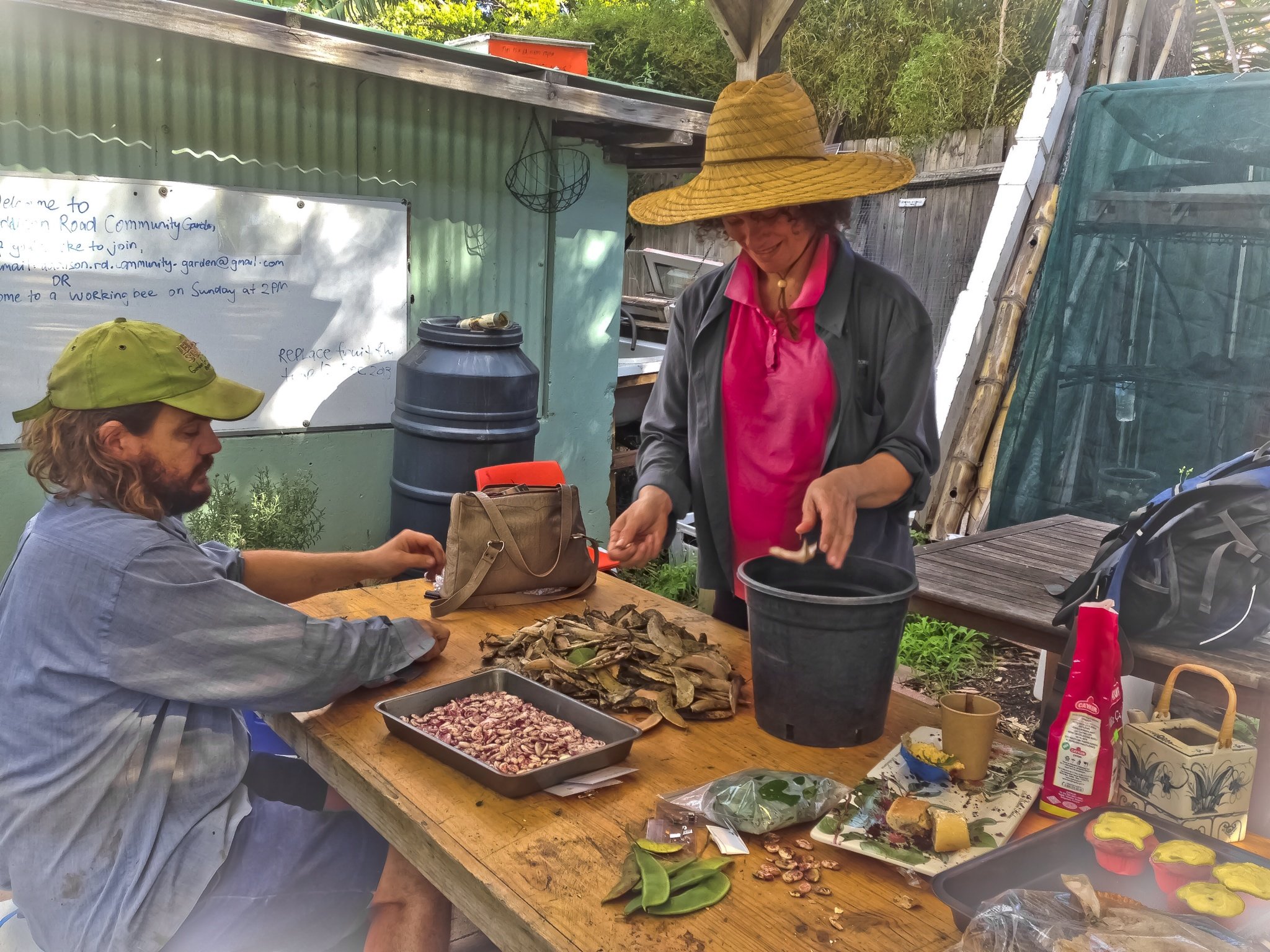
Right: John, a horticulturist and gardening educator from James Street Reserve Community Garden in inner urban Redfern, with some plants to take back with him.
In a scene common to community gardens across the country, gardeners collect seed to dry and save for next season's planting.
Saving seeds and swapping them with other community gardens and home gardeners is a do-it-yourself approach to conserving our agricultural biodiversity, the range of food and other useful plants we rely upon for our sustenance and materials.
To join with others in this important endeavour and to swap seeds, community gardens sometimes set up Local Seed Networks (more at: seedsavers.net where you will find the Seed Savers Handbook and the location of Local Seed Networks around Australia).
Saving seeds and swapping them with other community gardens and home gardeners is a do-it-yourself approach to conserving our agricultural biodiversity, the range of food and other useful plants we rely upon for our sustenance and materials.
To join with others in this important endeavour and to swap seeds, community gardens sometimes set up Local Seed Networks (more at: seedsavers.net where you will find the Seed Savers Handbook and the location of Local Seed Networks around Australia).
There's a track
winding back
to an old galvanised iron shack through Addison Road Community Garden...
winding back
to an old galvanised iron shack through Addison Road Community Garden...
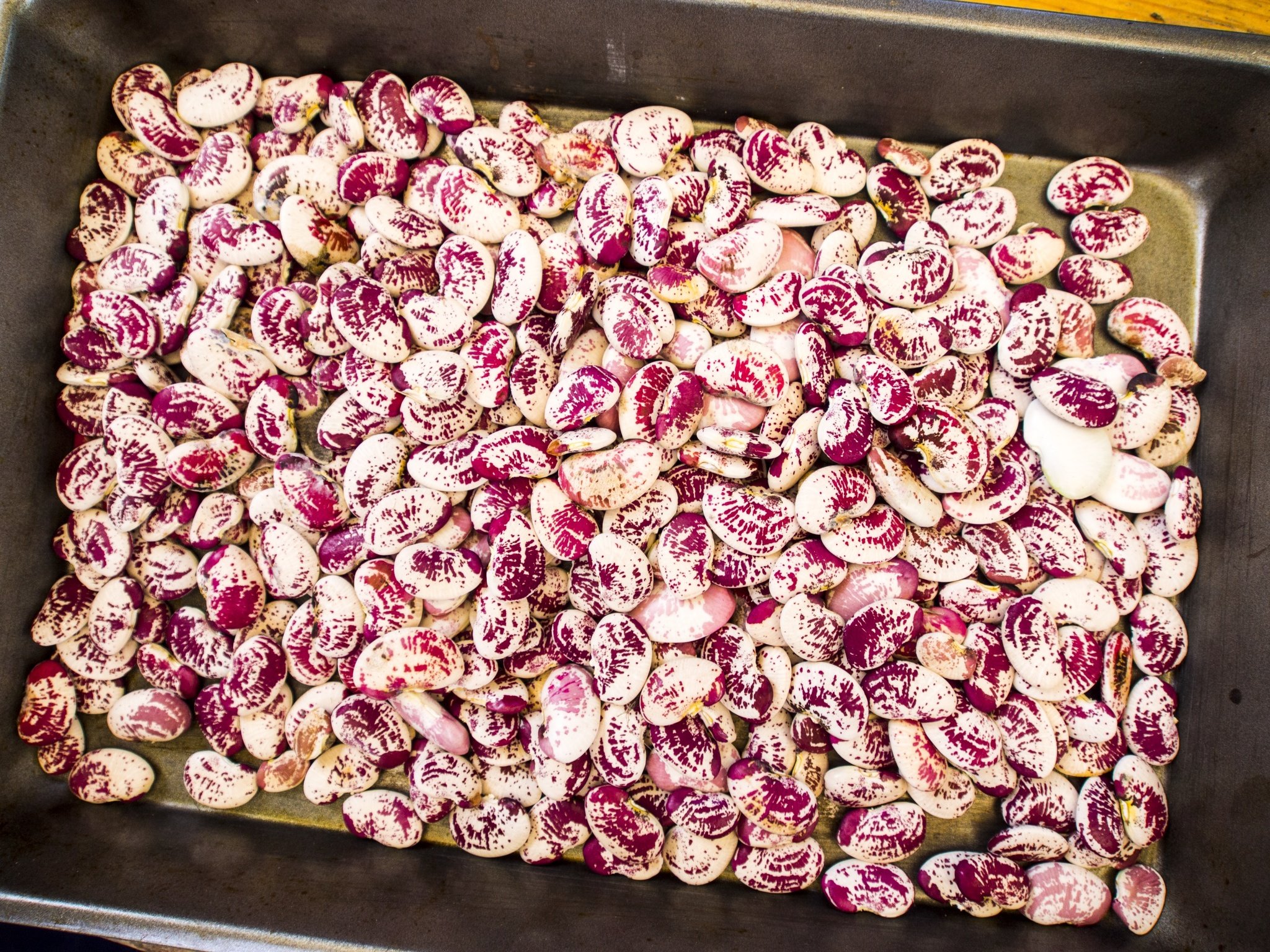
The old buildings at the Addison Road Community Centre, like these at the end of the community garden, have been converted into arts studios and meeting places.
The seed of bean ready to dry and store for next season's panting and to swap with other gardeners.
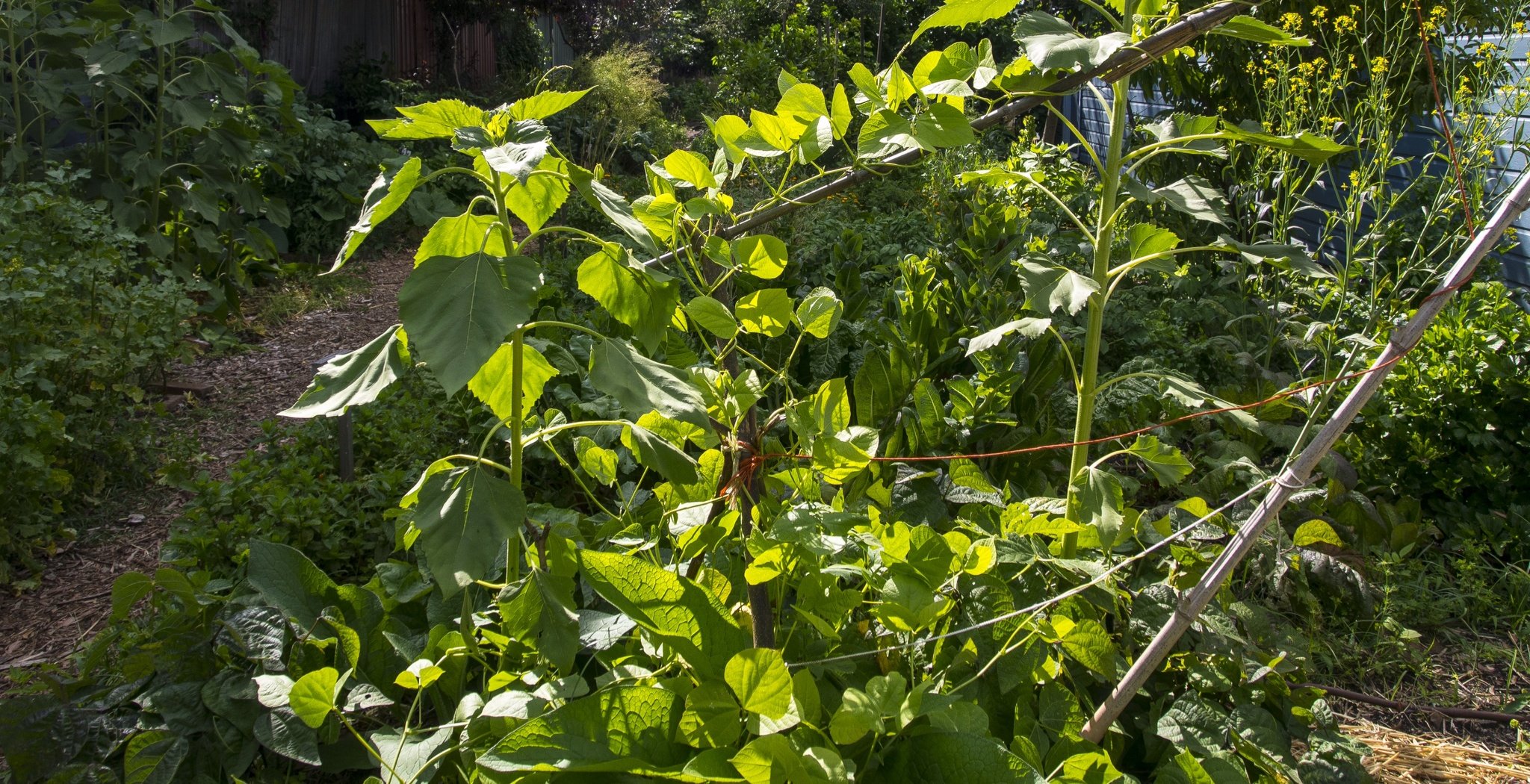
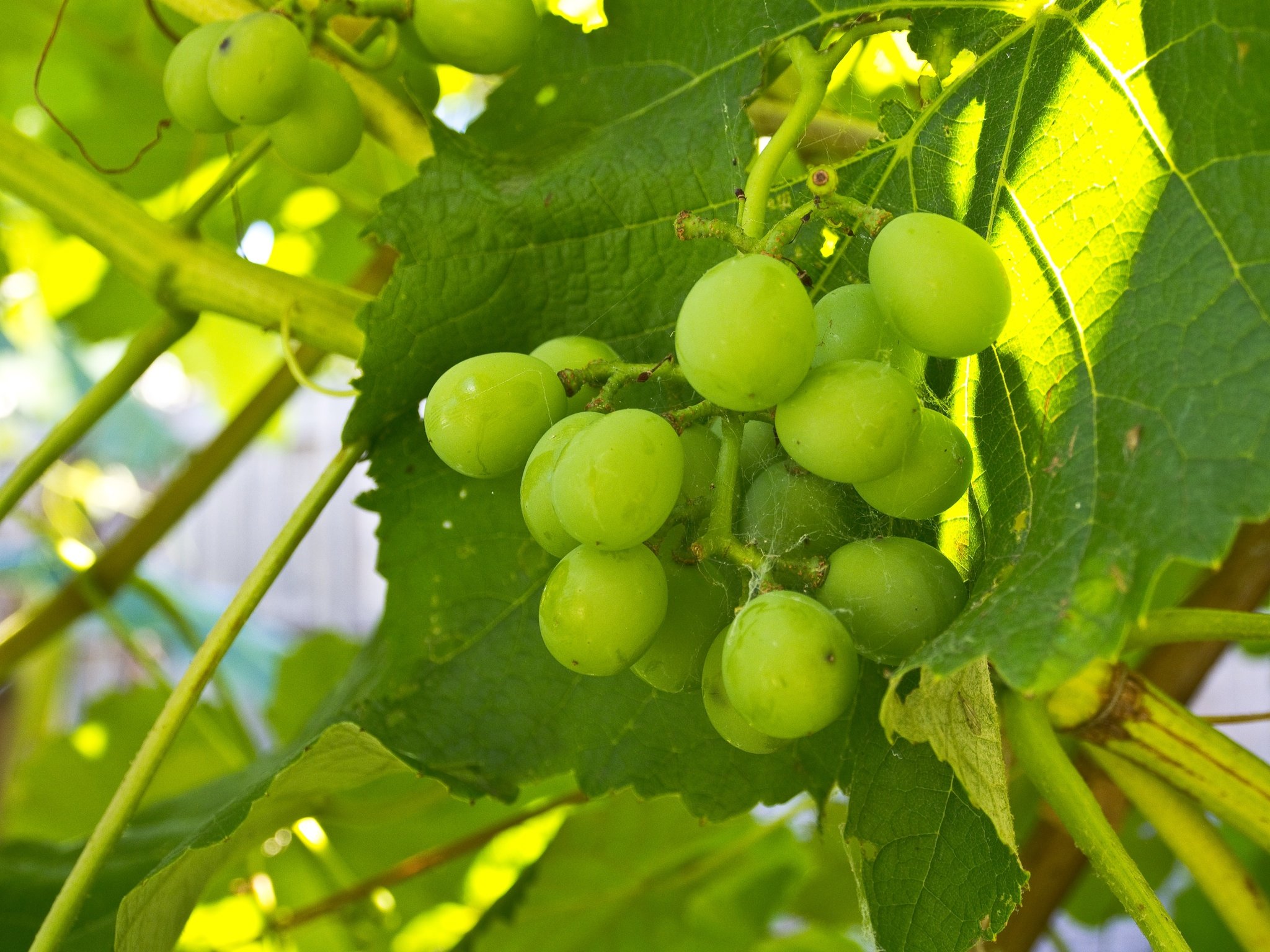
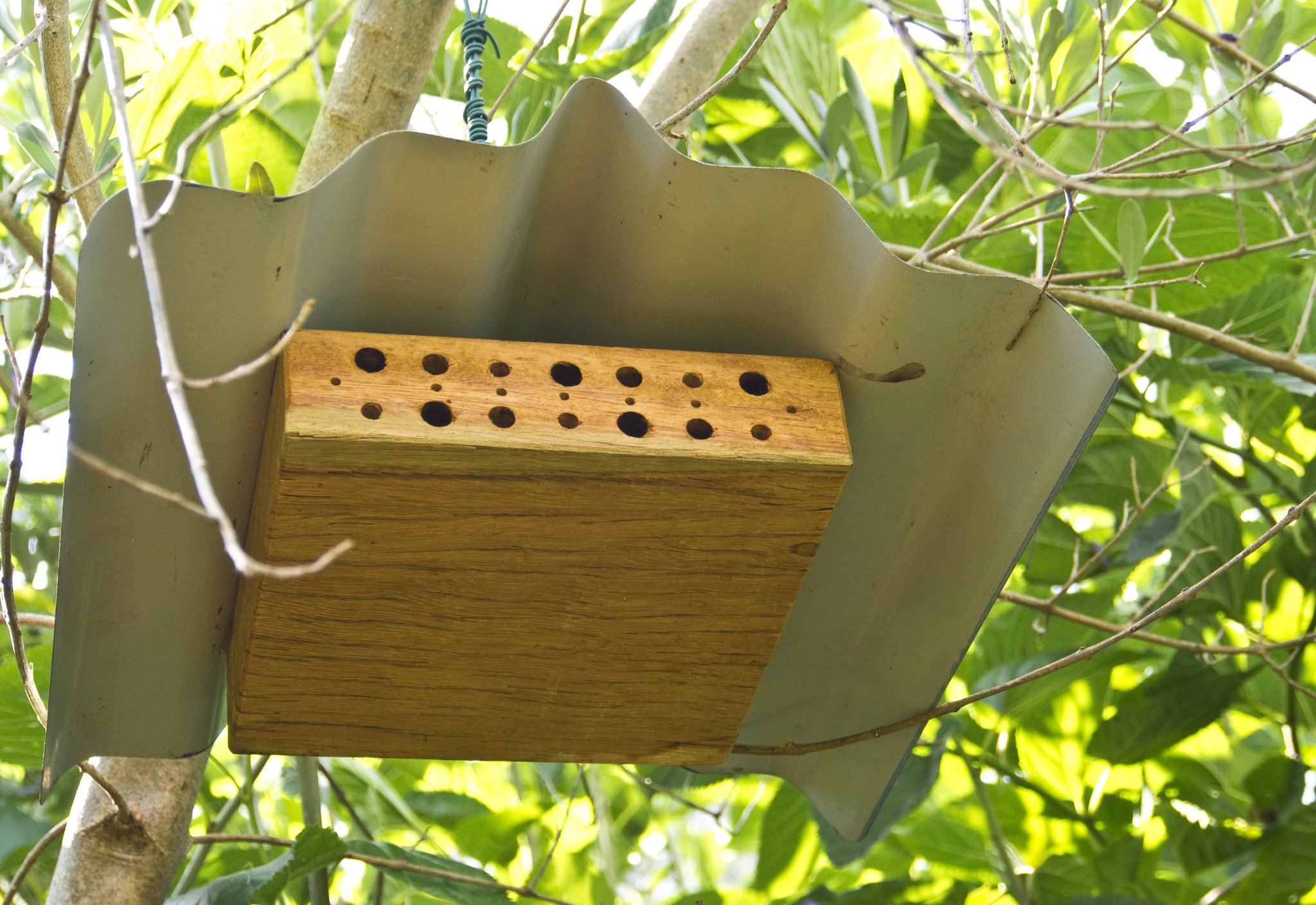
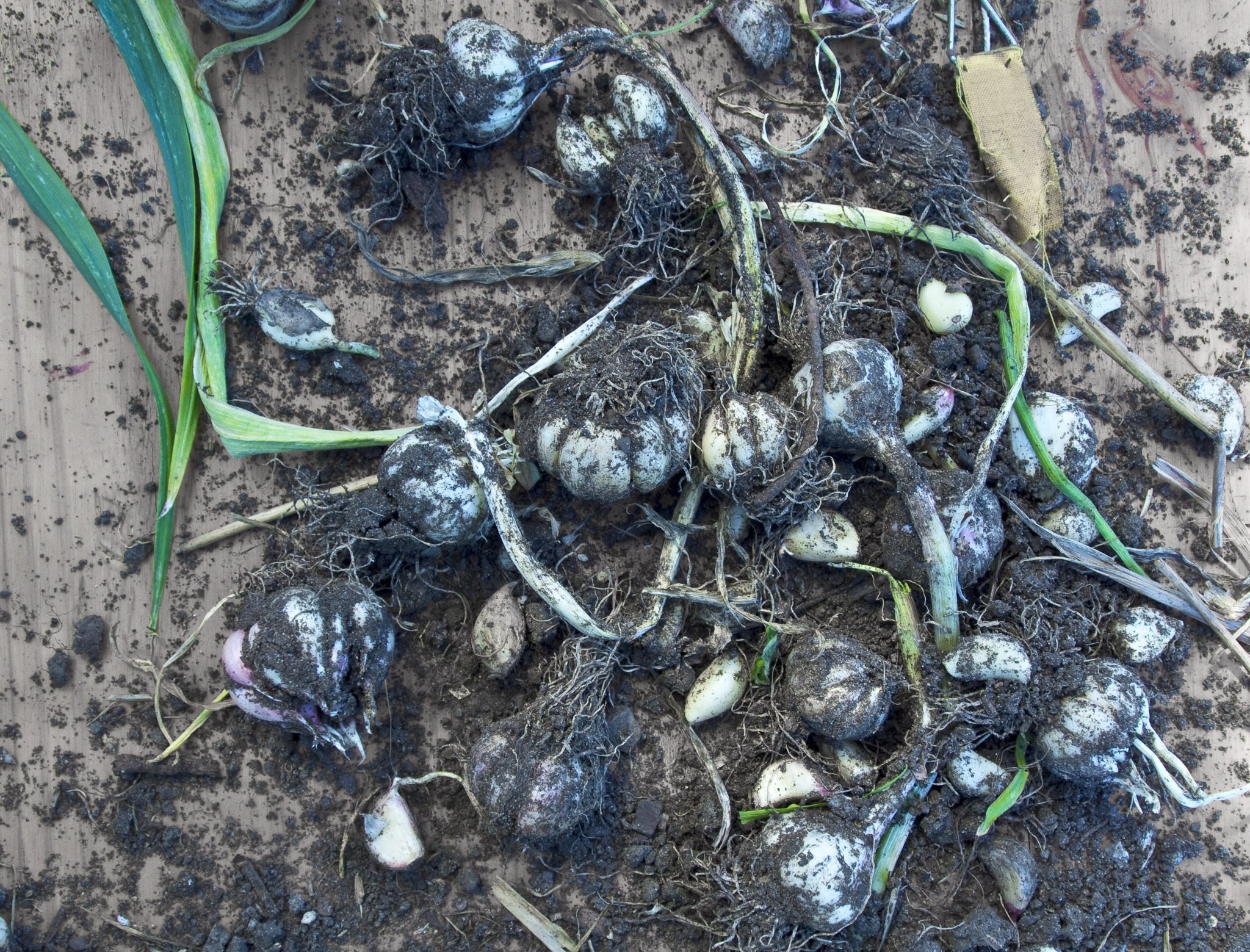
Feeding the garden with waste...
The bounty of Addison Road Community garden — grapes ripening on a trellis and garlic freshly dug from the soil.
Making compost from organic wastes from the community garden and from the Sunday markets at the community centre is an important activity. Not only does the compost fertilise the garden, it diverts waste from landfill.
Salvage — from waste to fertiliser...
Fiona Campbell, a local government sustainability and organic gardening educator and a visitor to Addison Road Community Garden, checks out the flower of the icecream bean tree (Inga edulis), a legume with large yellow pods the pulp of which can be eaten (the 'icecream').
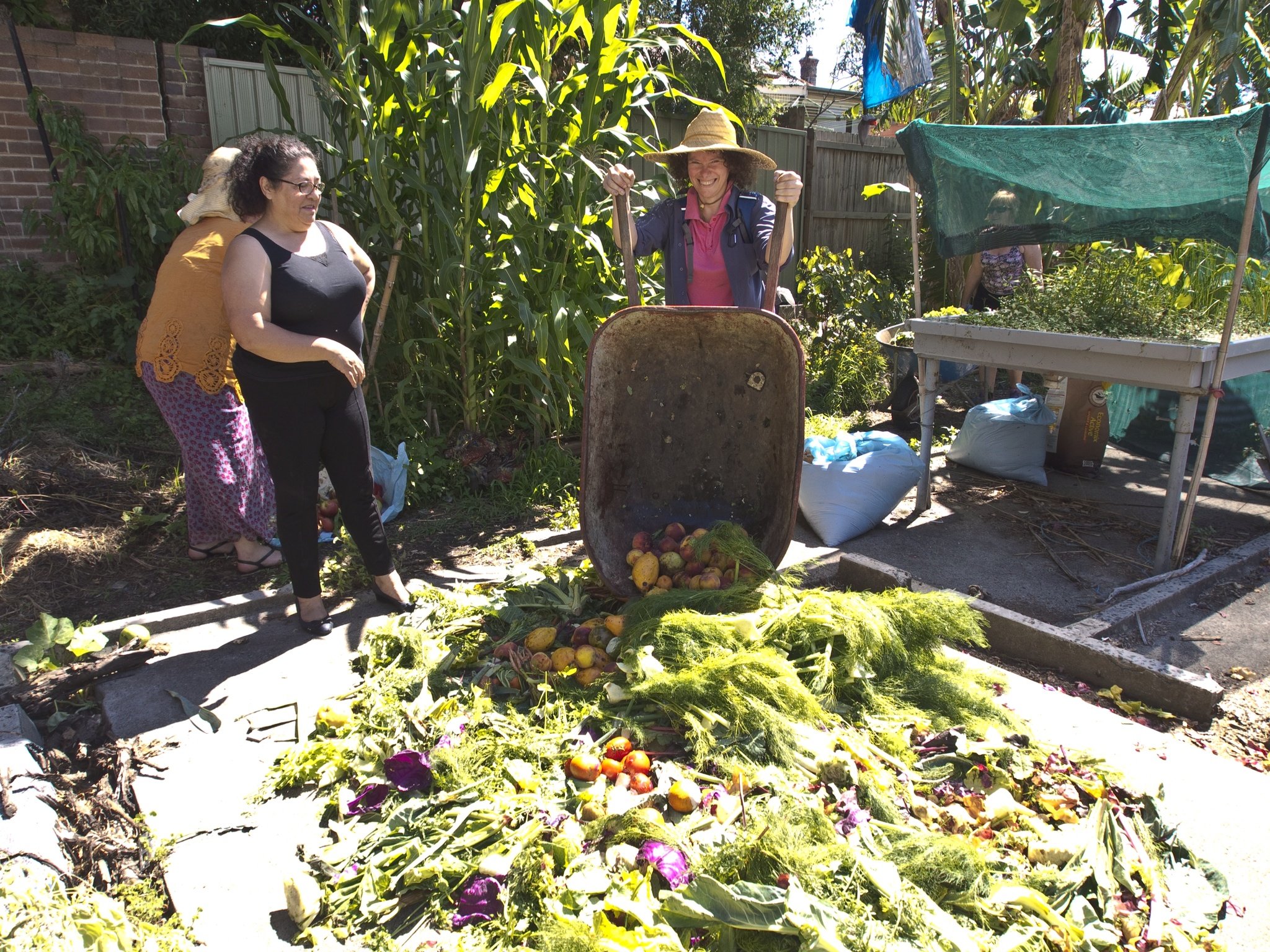
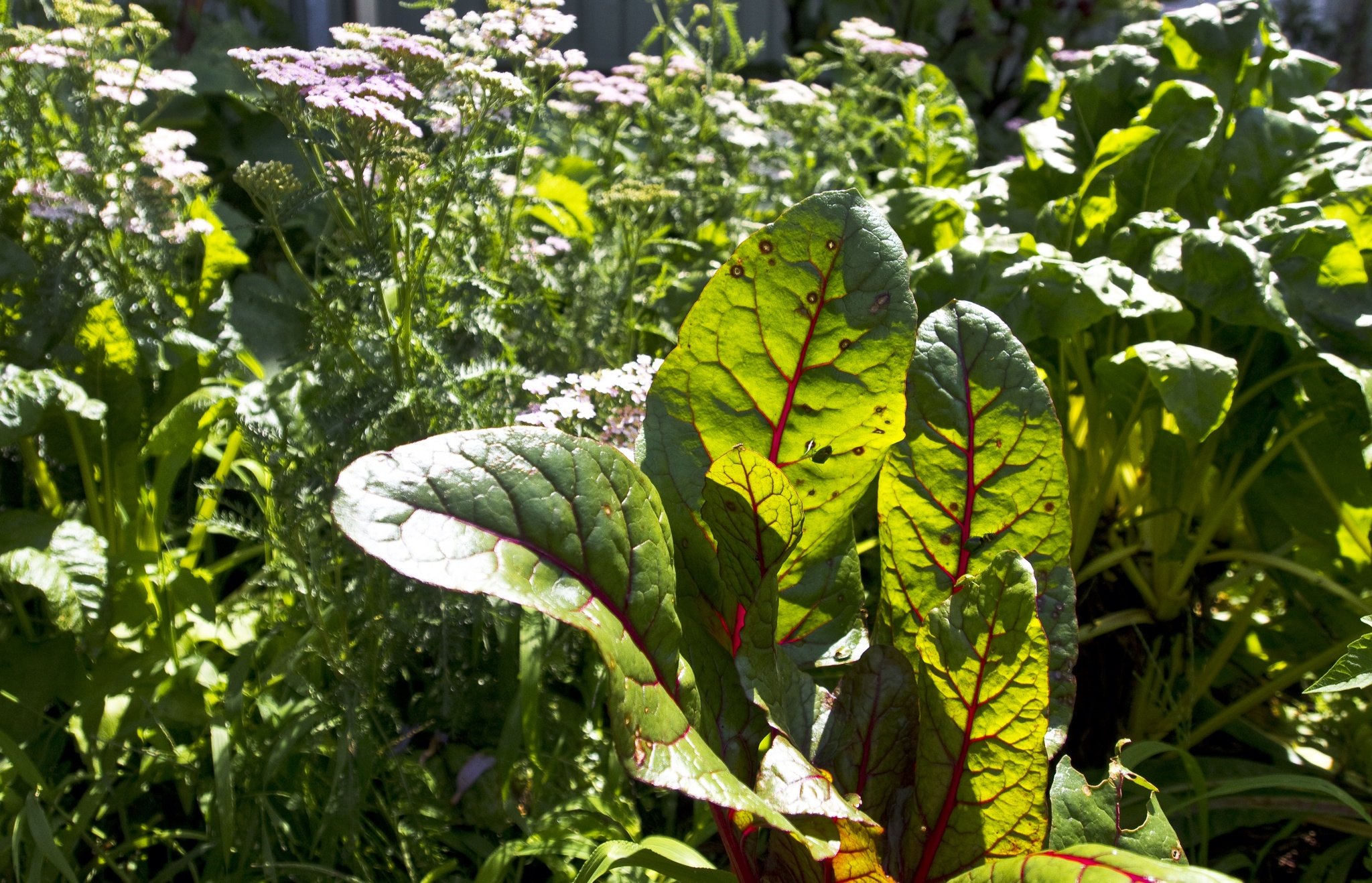
At the end of the Sunday market at Addison Road Community Centre, the community gardeners collect organic wastes from the fruit and vegetable sellers and bring it back to the garden to process and compost it, turning waste into fertiliser.
It was during the last month of Spring that the Sydney Community Gardens Network gathered at Addison Road Community Garden. The Network is part of the national educational, networking and advocacy body, the Australian City Farms & Community Gardens Network (communitygarden.org,au).
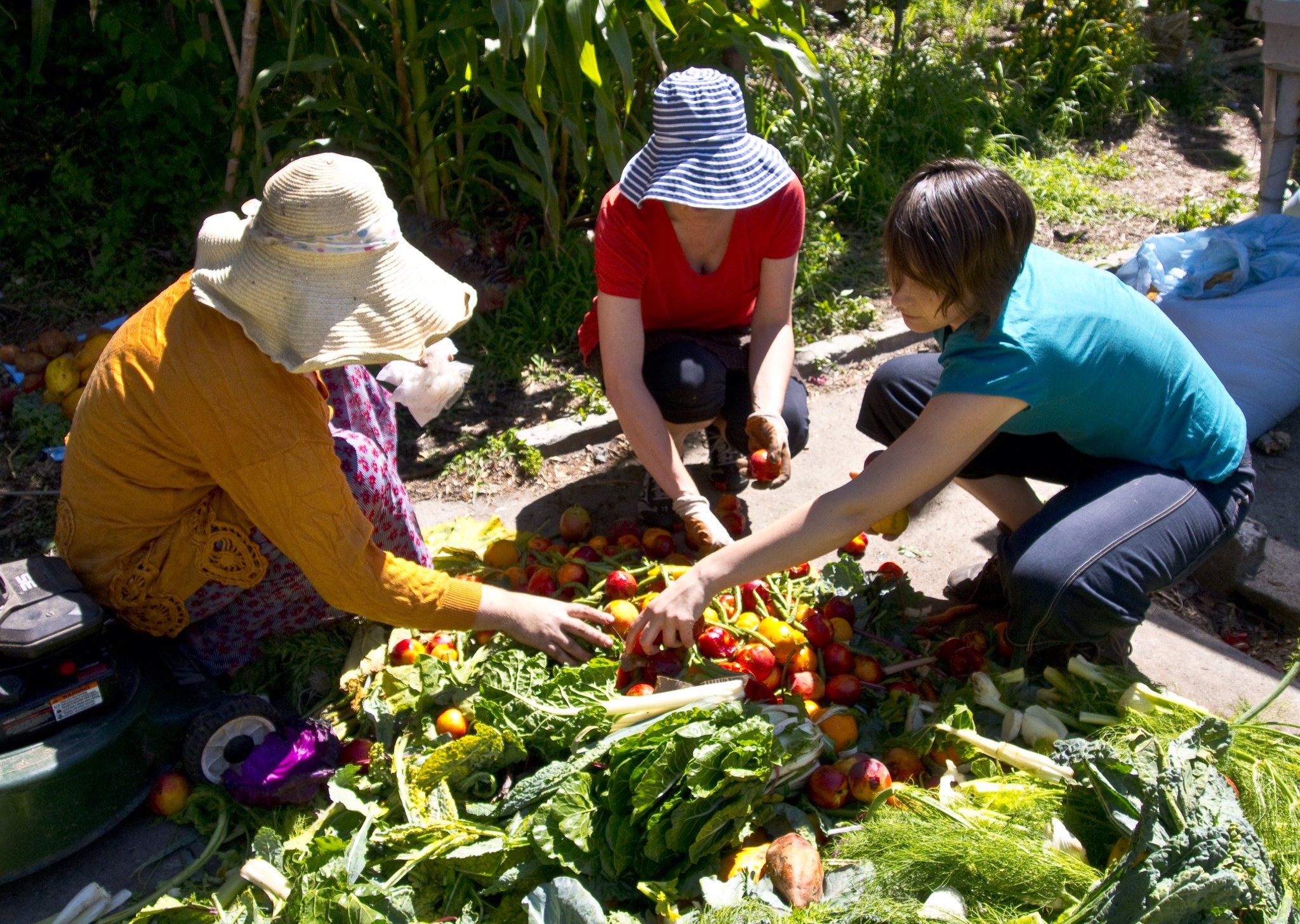
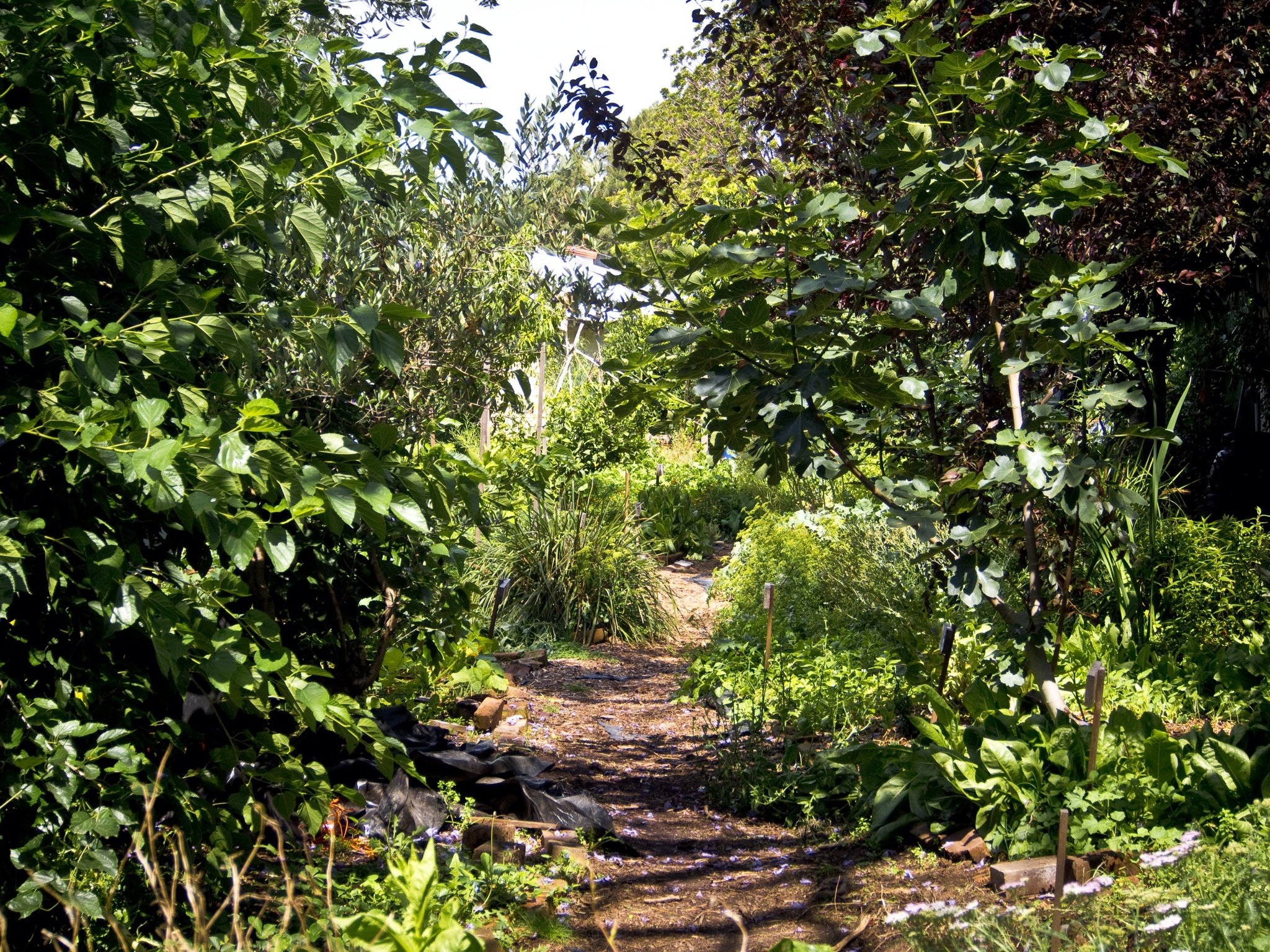
First, any fruit and vegetables that are useable are salvaged.
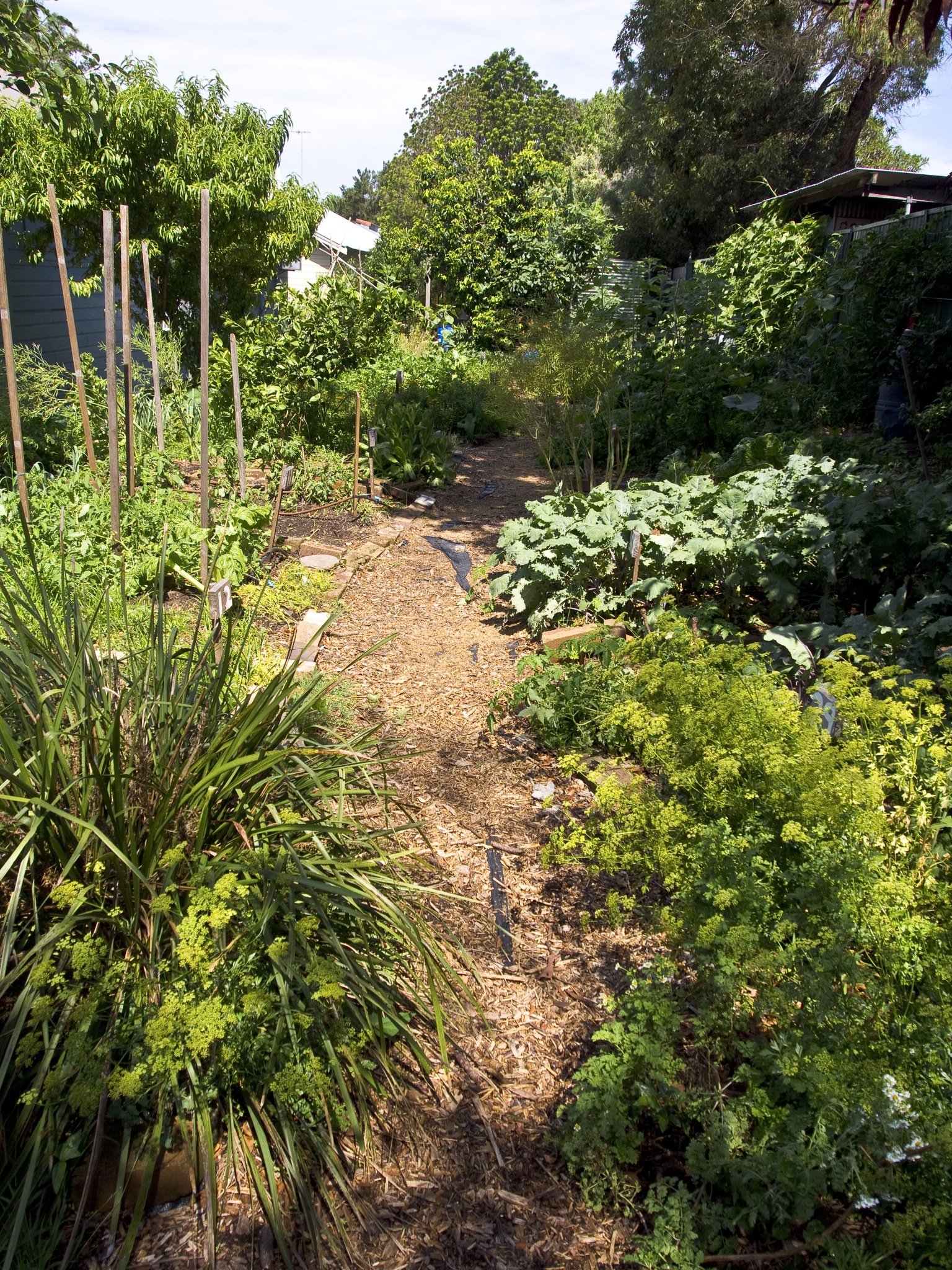
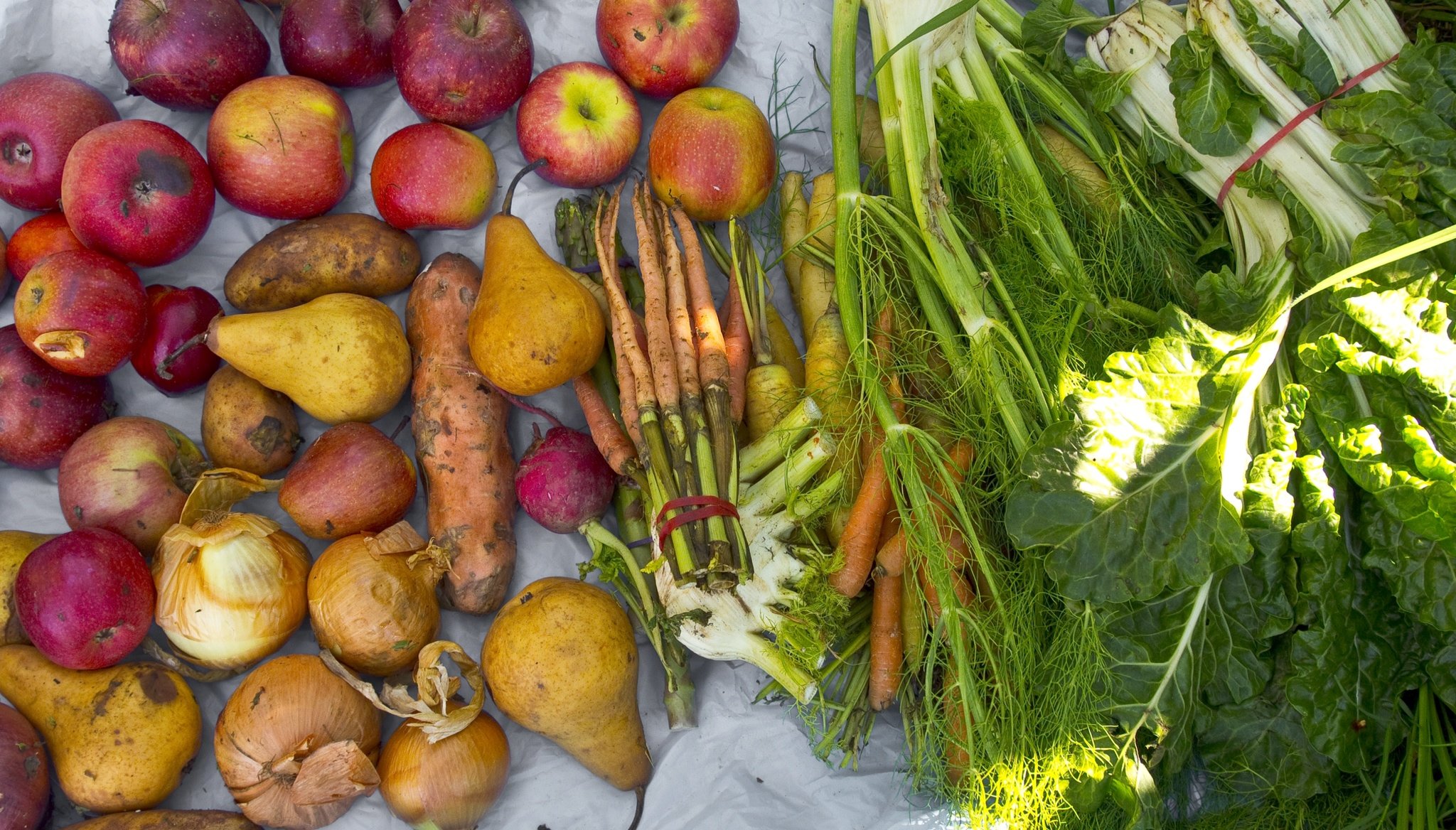
Above: Blueberries and, along the fence, bananas. At right, a box for the solitary, stingless, Australian native bee has been installed in a tree.
Many fruit and vegetables are still edible after being salvaged from the Sunday market discards of the fruit and vegetable sellers.
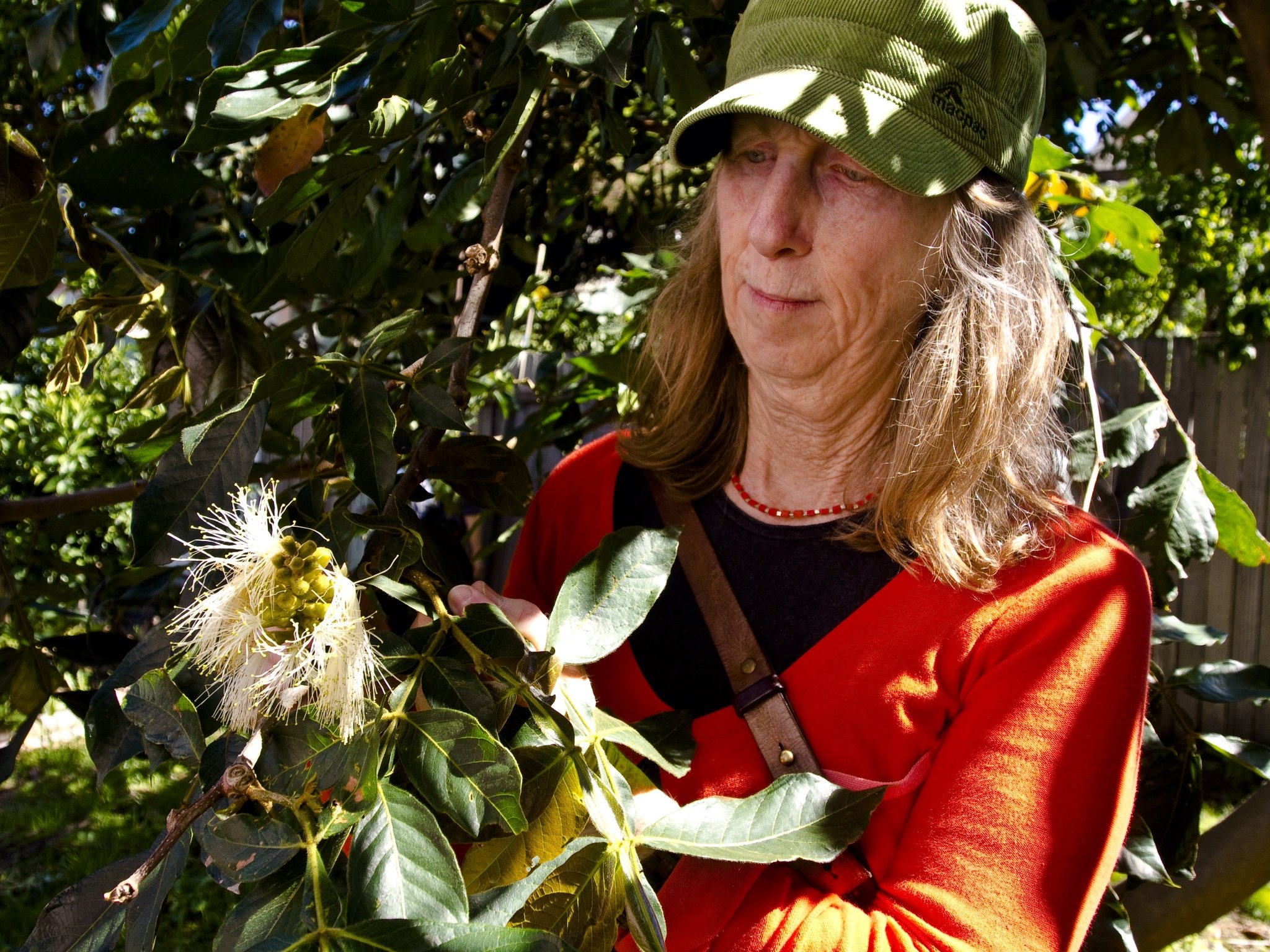
Above, sunshine backlights the leaf or rainbow chard, revealing its venous structure.
At right, the pale flowers of the herb, rue, come into blossom. Flowers are important in the garden because they attract the insects, like bees, that pollinate our plants and form the basis of the insect food web that is helps us manage insect pests in the garden.
Addison Road Community Garden is home to a broad diversity of herbs, vegetables and fruit, a compact garden packed with vegetative variety.
At right, the pale flowers of the herb, rue, come into blossom. Flowers are important in the garden because they attract the insects, like bees, that pollinate our plants and form the basis of the insect food web that is helps us manage insect pests in the garden.
Addison Road Community Garden is home to a broad diversity of herbs, vegetables and fruit, a compact garden packed with vegetative variety.
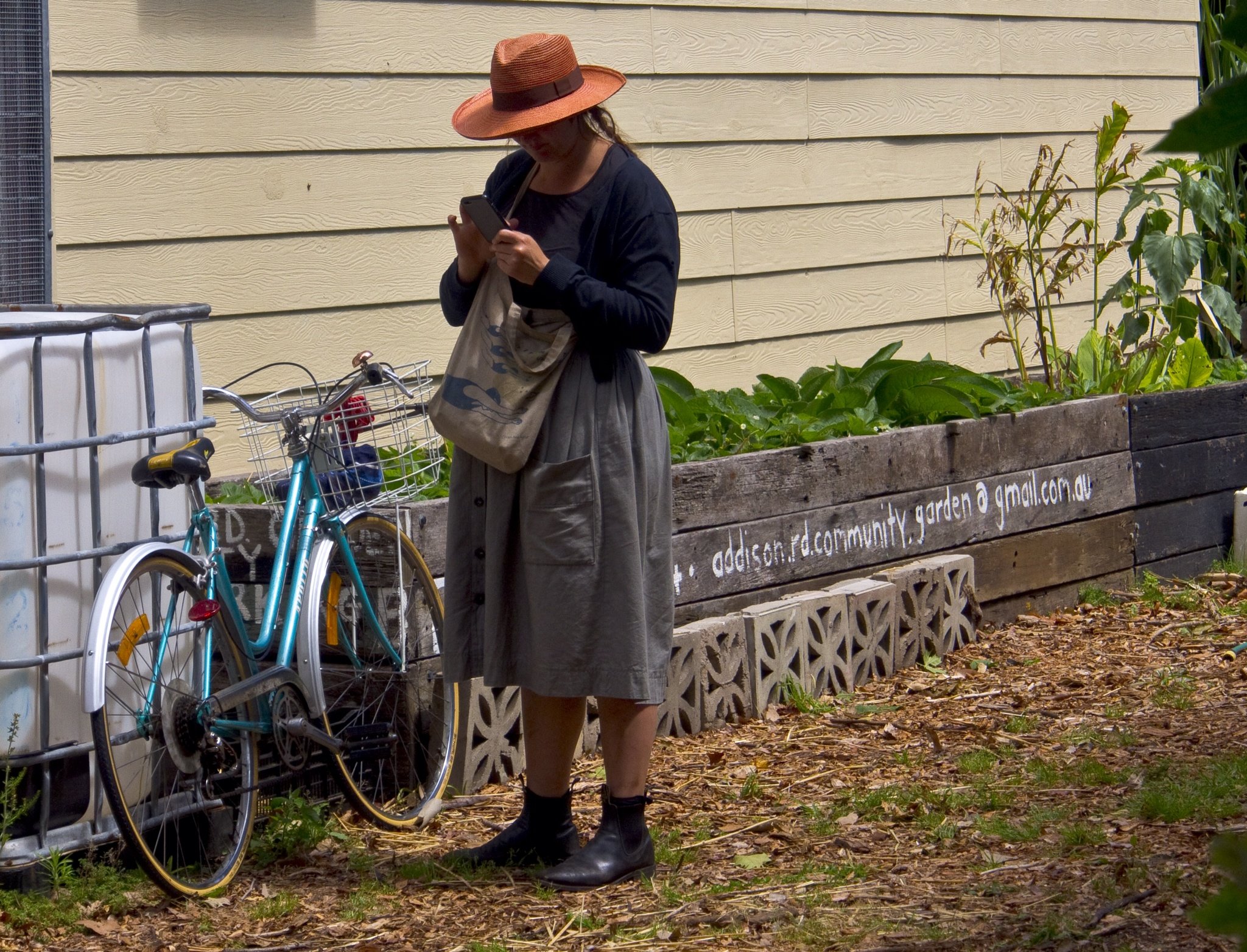
Community gardening — open access to good food, all part of a better, fairer food system...
After the gardeners claim what can be eaten or cooked, the remainder is spread out and pulverised by a mower. It then goes into the community garden's compost system and, after it breaks down, onto the garden to fertilise it.
